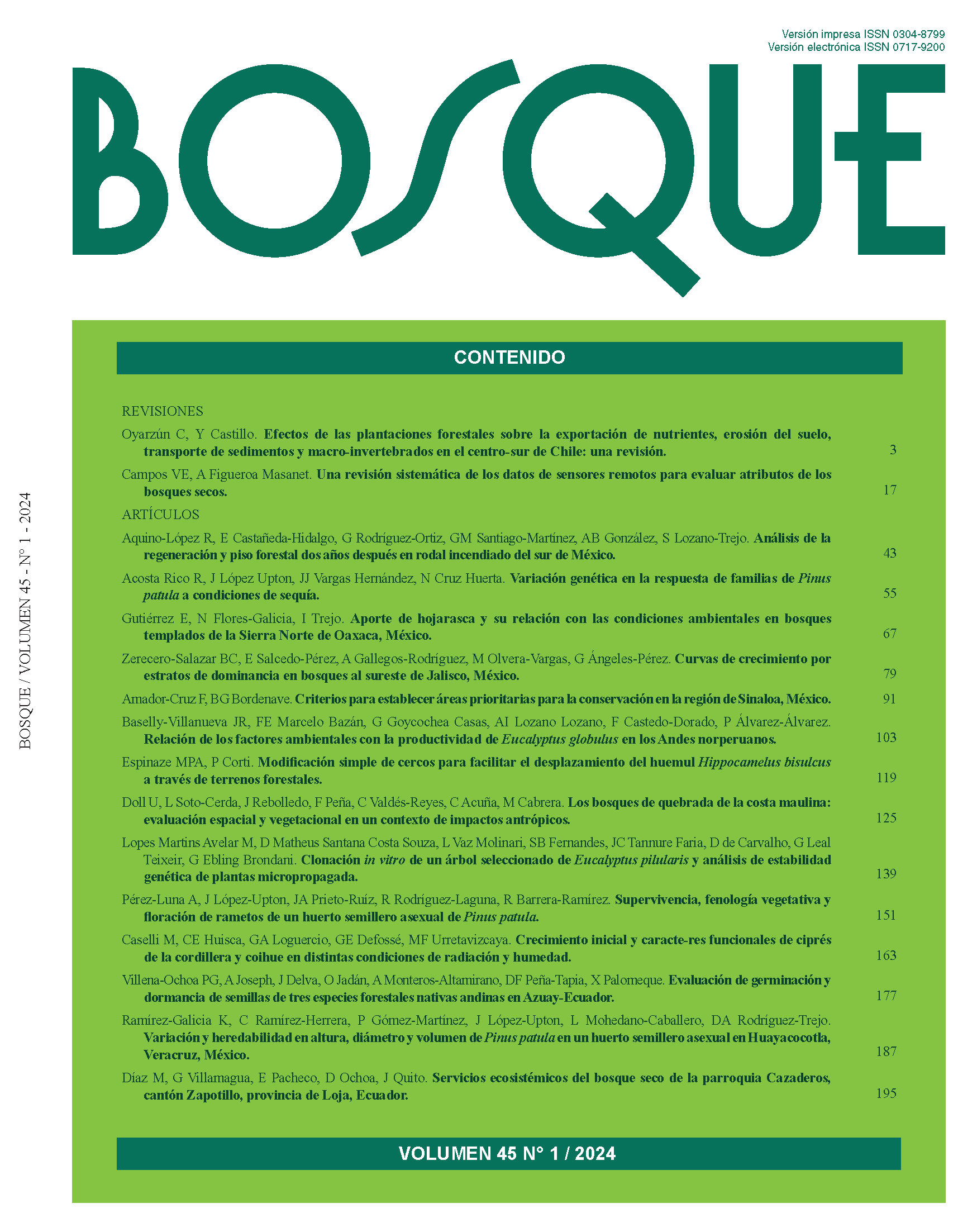Initial growth and functional traits of Austrocedrus chilensis and Nothofagus dombeyi under different radiation and humidity conditions
Main Article Content
Abstract
Austrocedrus chilensis and Nothofagus dombeyi are endemic species of the Andean-Patagonian forest, which grow in pure or mixed forests. Both have an important ecological role in the region and a great productive potential. However, knowledge about how humidity and radiation influence their early development is limited. In this study, we examined the combined effects of different light (95, 46 y 9 %) and soil moisture levels (100 - 80, 50 - 70 y 20 - 40 %) on survival and growth of N. dombeyi and A. chilensis over two growing seasons under nursery conditions. We also measured the effects of these factors on the following functional traits: leaf thickness and tensile strength, specific leaf area, total leaf area, leaf area / sapwood area to collar ratio, dry weight of the different compartments (leaves, branches, and roots), and internode length. Both species showed similar responses to the factors studied in survival and initial development, although N. dombeyi showed, in general terms, greater growth and lower survival than A. chilensis. The intermediate and high radiation level favored the growth of both species. The humidity levels did not have significant effects on growth, but they did show effects on some of the functional traits, generally interacting with radiation. Also, the lower level of humidity combined with the greater radiation, decreased N. dombeyi survival. It is concluded that the best performance of both species occurs in radiation conditions close to 50 %, which would correspond to forests of these species with 8-10 m2 ha-1 of basal area.

